Virtual reality (VR) is a technology that has been growing exponentially, it has found it ‘s way into many homes with products such as the oculus quest recently acquired by Facebook, we have come to know and play games like Beat saber and even some car racing simulation games. In other field like construction and interior decoration, it has proven to be a very useful tool for the industry.
Just like the existing tools we use for video conferencing e.g., Zoom, Microsoft teams and skype, VR would save us time on travel, especially now during a global pandemic where people cannot meat up in large groups. It would connect regional offices and make the experience even more personal as we know it without compromise of not seeing and meeting the person.
Here are 3 ways VR technology will take your meetings to another level in the future:
-
- Ability to see co-workers in living room through VR. As we work from home and a regional office calls for a meeting, you could simply put on your VR glasses to see them in your living room. Meanwhile at the office, VR would breakdown walls and connect silos so you can have an open office encounter and collaboration. VR would also make your workflow better. For the information worker, VR would enable you to manipulate data and workstations in exciting new ways, across infinite monitors, making data gathering, creation and analysis even more seamless and speedy.
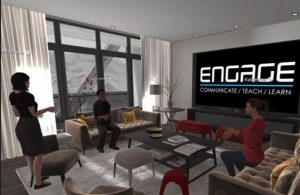
- You can hologram-in to meetings. Virtual assistant holograms already greet customers at airports, explain product campaigns at wholesalers and welcome visitors as receptionists. It is not far-fetched to say the future of work will feature real-time holograms of absentees and remote workers in meetings. Between the in-person simulation and the possibility to manipulate 3D objects, holograms would enhance your presentations and brainstorming sessions. While additional studies would be required to determine whether we respond to holograms in the same way as humans, we expect to see similar benefits to relationship building and collaboration from eye contact and face-to-face interaction.
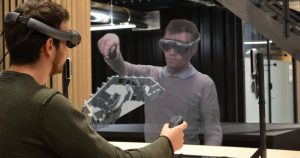
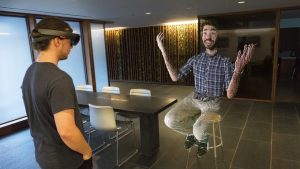
- Everyone’s the know-it-all in meetings with augmented reality. If IKEA can successfully launch an augmented reality catalog to sell furniture, you can expect companies to put this technology to work for better meetings in the near future.Just as video conferencing tools like iMeet® give users instant access to attendees’ information through social apps and biographies, augmented reality could provide the same information about who’s in the meeting. Like a high-tech, highly-informative name tag, augmented reality features like this would improve collaboration. As an enhanced tool to access information from anywhere, the business applications for information workers might also include better brainstorming and problem solving in meetings or even gamification to make presentations fun.
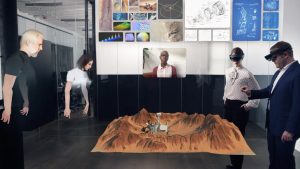 Much like holograms, they could also bring meetings to out-of-office workers (for instance, remote workers could augment colleagues into their own home office).Connecting dispersed offices and remote workers is perhaps one of the most appealing applications of all these technologies, cementing the “anywhere, anytime, from any device” work style for modern workers. VR’s gaining steam, but companies still need to wait in line before the technology develops for efficient use in the workplace. Until then, today’s virtual meeting solutions will help your team sustain a competitive edge.Learn all about the collaborative advantage of iMeet today.
Much like holograms, they could also bring meetings to out-of-office workers (for instance, remote workers could augment colleagues into their own home office).Connecting dispersed offices and remote workers is perhaps one of the most appealing applications of all these technologies, cementing the “anywhere, anytime, from any device” work style for modern workers. VR’s gaining steam, but companies still need to wait in line before the technology develops for efficient use in the workplace. Until then, today’s virtual meeting solutions will help your team sustain a competitive edge.Learn all about the collaborative advantage of iMeet today.
- Ability to see co-workers in living room through VR. As we work from home and a regional office calls for a meeting, you could simply put on your VR glasses to see them in your living room. Meanwhile at the office, VR would breakdown walls and connect silos so you can have an open office encounter and collaboration. VR would also make your workflow better. For the information worker, VR would enable you to manipulate data and workstations in exciting new ways, across infinite monitors, making data gathering, creation and analysis even more seamless and speedy.
https://cdn.wccftech.com/wp-content/uploads/2017/11/fb61f051a1a6938ab1b24b4fbf4782c7_original.jpg
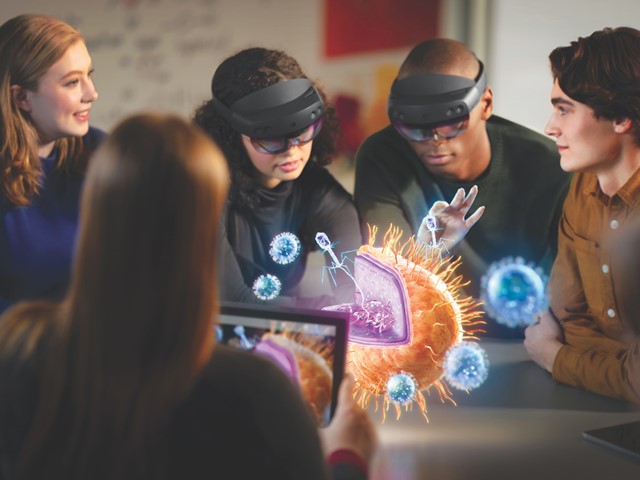


No more boring business meetings.?
Wow! So interesting, Holograms are so fascinating and using gamification for presentations could really make our work environment so much more fun. Great post Precious! ??